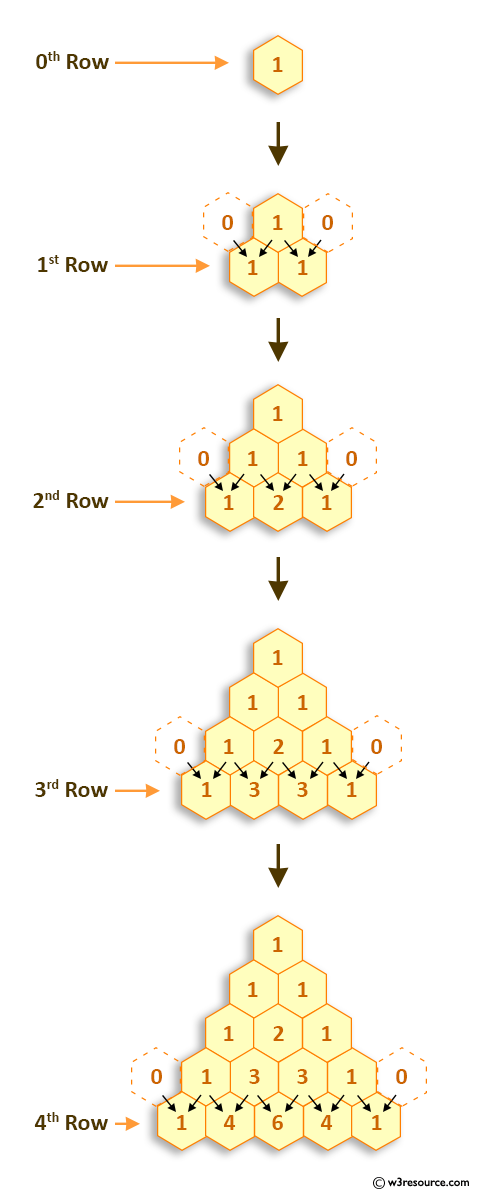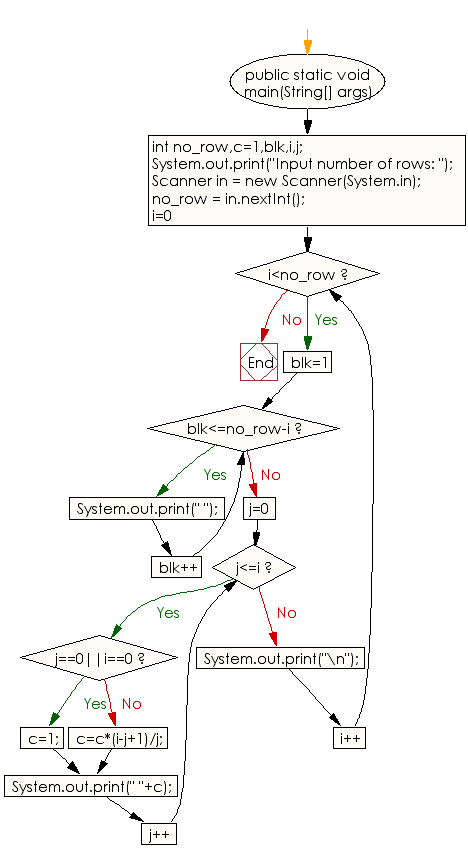Java: Display Pascal's triangle
Pascal's Triangle
Write a Java program to display Pascal's triangle.
Construction of Pascal's Triangle:
As shown in Pascal's triangle, each element is equal to the sum of the two numbers immediately above it.

Test Data
Input number of rows: 5
Sample Solution:
Java Code:
import java.util.Scanner;
public class Exercise22 {
public static void main(String[] args)
{
int no_row,c=1,blk,i,j;
System.out.print("Input number of rows: ");
Scanner in = new Scanner(System.in);
no_row = in.nextInt();
for(i=0;i<no_row;i++)
{
for(blk=1;blk<=no_row-i;blk++)
System.out.print(" ");
for(j=0;j<=i;j++)
{
if (j==0||i==0)
c=1;
else
c=c*(i-j+1)/j;
System.out.print(" "+c);
}
System.out.print("\n");
}
}
}
Sample Output:
Input number of rows: 5
1
1 1
1 2 1
1 3 3 1
1 4 6 4 1
Flowchart:

For more Practice: Solve these Related Problems:
- Write a Java program to display Pascal’s Triangle using a two-dimensional array.
- Write a Java program to generate Pascal’s Triangle recursively without using iterative loops.
- Write a Java program to compute the sum of each row in Pascal’s Triangle and display the results.
- Write a Java program to format Pascal’s Triangle so that each row is centered when printed.
Go to:
PREV : Display Diamond Pattern.
NEXT : Reverse * Triangle.
Java Code Editor:
Contribute your code and comments through Disqus.
What is the difficulty level of this exercise?
Test your Programming skills with w3resource's quiz.
